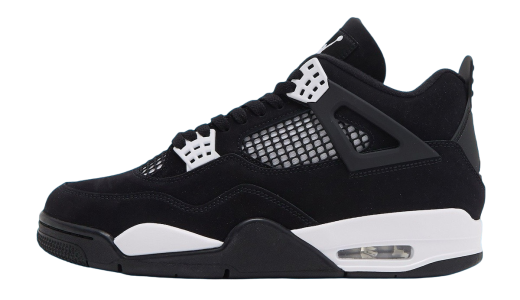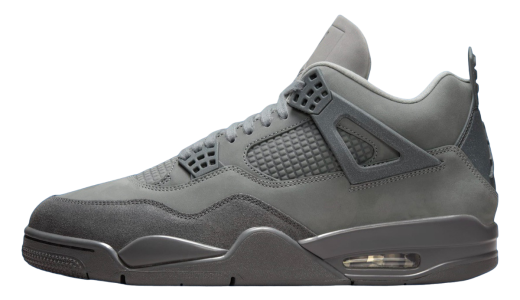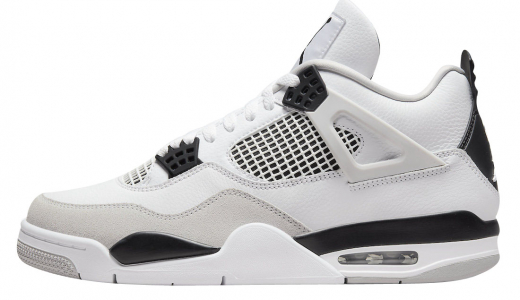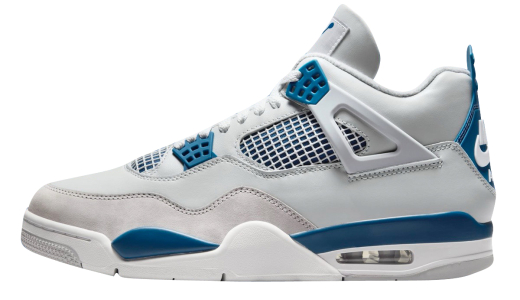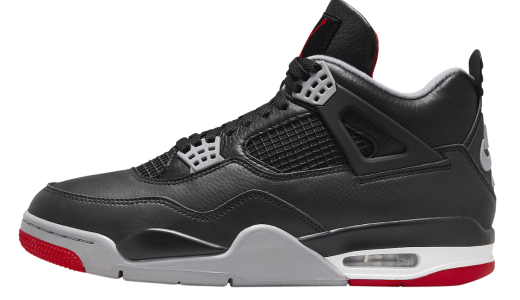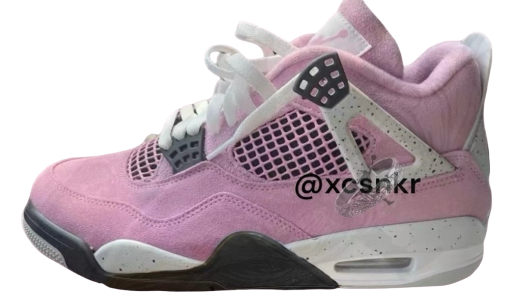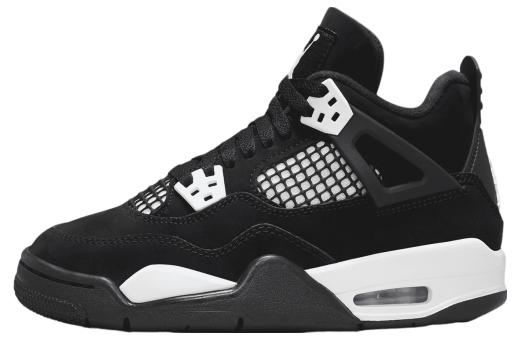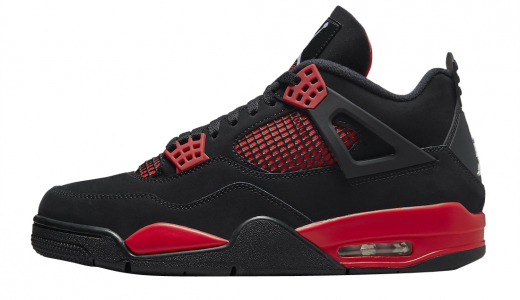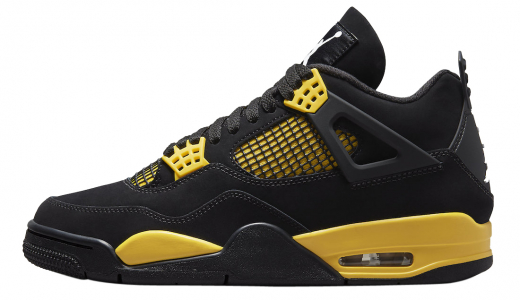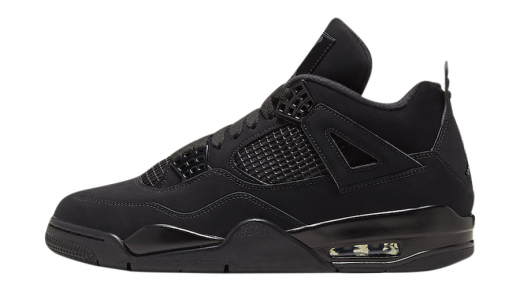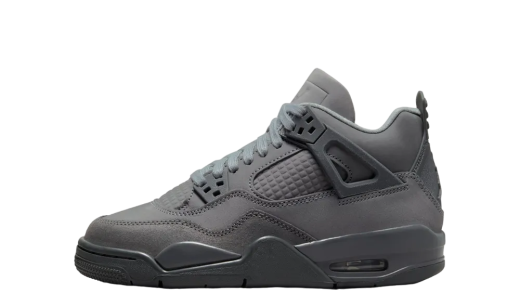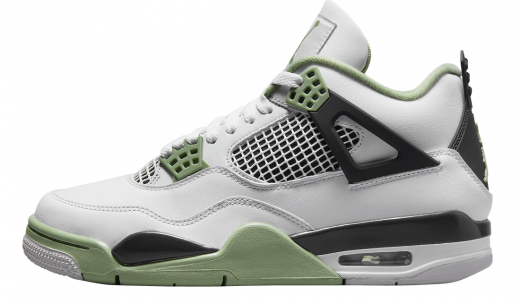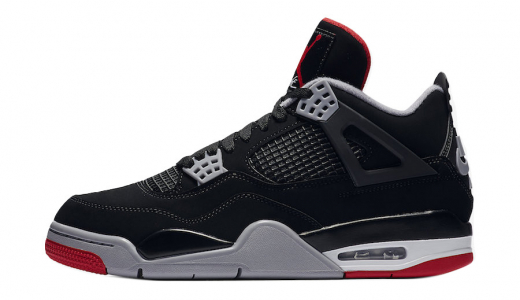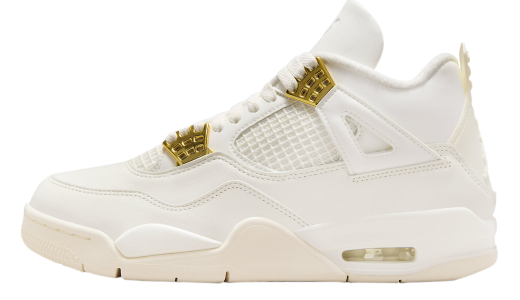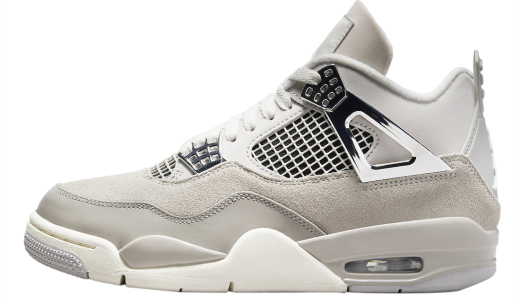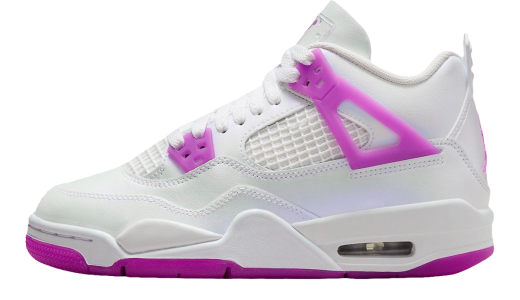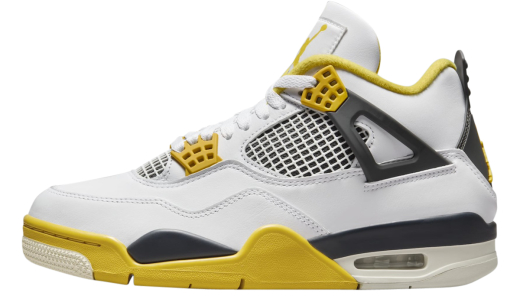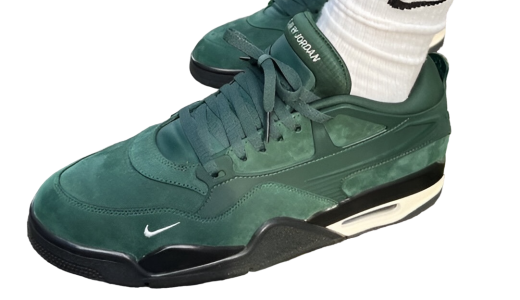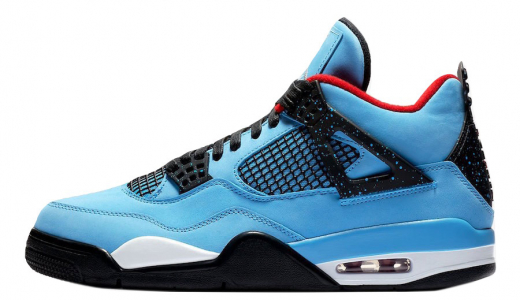Air Jordan 4
The Air Jordan 4 is a celebrated model within the sneaker community, originally released in 1989. Designed by the legendary Tinker Hatfield, this iconic shoe marked several firsts for the Jordan brand. Notably, it was the first Air Jordan to be released on an international scale, broadening its influence and accessibility. The design features breathable netting on the upper, visible Air cushioning, and a distinctive "wings" lacing system that allows for customized support. This combination of innovative elements not only enhanced performance on the basketball court but also cemented the shoe's status as a cultural icon.
As the years have passed, the Air Jordan 4 has maintained its relevance through various retros and special editions. Its timeless design and association with Michael Jordan's electrifying moments on the court—including "The Shot" against the Cleveland Cavaliers—have solidified its place in sneaker history. The model has been embraced by both athletes and fashion enthusiasts alike, frequently seen in collaborations with high-end designers and influential streetwear brands. With a rich heritage and ongoing impact, the Air Jordan 4 continues to be a coveted addition to any sneaker collection.
History of Air Jordan 4
The Air Jordan 4, a product of both aesthetic brilliance and deep cultural impact, stands as one of the most iconic sneakers in history. Its tale winds through the world of sport, fashion, and popular culture, continually shaping and being shaped by these realms. Unveiled in 1989, the Air Jordan 4 has a rich history worth exploring in detail.
Concept and Design
As a follow-up to the Air Jordan 3, which played a significant role in reestablishing Michael Jordan's relationship with Nike, the Air Jordan 4 carried the heavy burden of living up to its predecessor's success. The responsibility for this task once again fell to Tinker Hatfield, the legendary Nike designer who had already carved out a reputation as a visionary within the industry.
Hatfield approached the design of the Air Jordan 4 with an eye for innovation, both technologically and aesthetically. Elements such as the grid mesh, similar to that used in materials for fencing equipment, offered enhanced breathability and made the shoe lighter. Additionally, the inclusion of "wings" on the sides allowed for customized lace setups, diversifying the ways in which wearers could secure the shoe. This kind of functional versatility was a significant leap forward from previous iterations and underscored the emphasis on performance.
The Air Jordan 4 featured an air-cushion sole for increased comfort and enhanced on-court performance. The visible Air-Sole unit in the heel and encapsulated Air unit in the forefoot were technological marvels of the time, ensuring a combination of lightness and responsiveness. Its robust support and cushioning made it an ideal shoe for Michael Jordan, who was known for his aggressive playing style, explosive vertical jumps, and dynamic movements on the court.
Cultural Impact
The Air Jordan 4 debuted in four primary colorways: the "Black/Cement," "White/Cement," "Military Blue," and "Fire Red." Each colorway became iconic in its own right, contributing to the sneaker’s diverse appeal. Its cultural cache was boosted significantly when Michael Jordan donned the "Black/Cement" pair for one of the most famous moments in basketball history—"The Shot."
In the 1989 NBA Playoffs, Michael Jordan made a buzzer-beater that eliminated the Cleveland Cavaliers, eternally cementing "The Shot" in basketball lore. The image of Jordan leaping in triumph, wearing the Black/Cement Air Jordan 4, became a vivid cultural moment that was presented on repeat in sports highlights and further immortalized in documentaries and retrospectives.
Adding to its cultural impact was its appearance in Spike Lee's movie "Do the Right Thing." A scene features a pair of pristine White/Cement Air Jordan 4s being scuffed, leading to an altercation. The moment was symbolic, capturing the sneaker's significance and the deep emotional investment people had in their Jordans. The movie helped cement the Air Jordan 4 as not merely a basketball shoe but as an integral part of urban culture.
Evolution and Retro Releases
The initial release cycle for the Air Jordan 4 concluded in 1989, but a reissue of the sneaker in 1999 reignited its prominence, demonstrating its lasting popularity. This re-release followed significant anticipation that had built up over the intervening years, particularly as sneaker culture grew more robust in the late 1990s.
The 1999 retro editions stayed fairly true to the original design, with minor updates to the branding and material quality. This fidelity to the original design helped maintain the nostalgic connection for older fans while introducing a new generation to the Air Jordan 4's timeless appeal. This successful retro release set a precedent for subsequent re-releases.
Jordan Brand celebrated the 20th and 30th anniversaries of the Air Jordan 4 in 2009 and 2019, respectively, with additional special releases. These included various collaborations, limited editions, and reissues of beloved colorways. For example, collaborative versions with renowned brands like Levi’s and eminent figures like Travis Scott emphasized the sneaker's universal appeal and its adaptability to modern styles.
Expansion and Collaborations
The process of evolving and expanding the Air Jordan 4 didn't stop at merely reproducing classic colorways. Over the years, a number of unique collaborations have propelled the model into new arenas of influence. Each new partnership provided the sneaker with a distinct twist, effectively narrating different stories while maintaining the shoe's original DNA.
In 2018, the collaboration with Levi’s produced a denim-clad Air Jordan 4 that was released in both blue and black versions. This project merged the timeless quality of Levi's denim with the storied legacy of the Jordan brand, creating a unique texture and aesthetic. The attention to detail was paramount, from the denim construction to the gum sole and the Levi’s branding replacing the traditional "Flight" logo on the tongue.
Another high-profile collaboration came with rapper Travis Scott in 2018, known as the "Cactus Jack" Air Jordan 4. This collaboration featured a blend of suede and premium materials, colored in University Blue to pay homage to Scott's home football team, the Houston Oilers. These sorts of collaborations helped to keep the Air Jordan 4 in the public eye, ensuring that it stayed relevant within the fast-paced world of sneaker culture.
Resale Market and Collectibility
Given its storied past and substantial cultural impact, the Air Jordan 4 naturally became a coveted item in the resale market. High demand, combined with limited releases, ensured that these sneakers would command steep prices on the secondary market. Websites and platforms dedicated to the buying and selling of rare sneakers often list special editions and original releases of the Air Jordan 4 at prices several times their original retail value.
This collectibility has led to the rise of a robust and passionate community of enthusiasts and collectors. Blogs, forums, and social media channels have cropped up dedicated to discussions around the shoe's various releases and iterations. Collectors would painstakingly compare details like material quality, stitching, color accuracy, and more, often delving into esoteric debates about which versions of the sneaker hold the most value and why.
Technological Advancements and Relevance
Technological advancements have continued to be a focal point of the Air Jordan line, and the Air Jordan 4 has seen updates that align with contemporary demands. Innovations in cushioning, material technology, and manufacturing processes have been applied, often subtly, to updated editions of the Air Jordan 4.
The use of lightweight yet durable materials such as Flyknit was introduced in some limited releases. This modification married the iconic design language of the Air Jordan 4 with cutting-edge textile technology, creating a model that not only looked good but performed well under modern athletic conditions.
The Influence Beyond Basketball
Even if rooted in basketball heritage, the Air Jordan 4 transcended its original confines and left indelible marks in various fields. It has become a symbol within hip-hop culture, often referenced or showcased by artists in music videos and lyrics. From the hip-hop-heavy New York streets to the cosmopolitan vibes of Tokyo, the Air Jordan 4's influence is palpable.
Additionally, the sneaker has appeared in various fashion runways, demonstrating its versatility and appeal in high-fashion circles. The intersection of sports, music, and fashion has always been dynamic, and the Air Jordan 4 sits comfortably at this juncture, proving its multifaceted relevance.
Ethical Considerations and Counterfeit Market
The growing luxury status of the Air Jordan 4 has not been without its problems. Rising resale values and limited releases have led to an explosion in the counterfeit market. Fake versions of the sneaker abound, often mimicking intricate details with surprising accuracy but lacking in material quality and ethical manufacturing practices.
The Jordan brand, along with Nike, has taken numerous steps to mitigate the spread of counterfeit products. Technologies like QR codes and special tagging have been introduced to help consumers verify authenticity, and education efforts aim to arm buyers with the knowledge needed to discern genuine products from fakes.
Community Engagement and Social Impact
One groundbreaking aspect of the Air Jordan line, including the Air Jordan 4, is the focus on community engagement. Michael Jordan, through his Jordan Brand, has initiated various programs targeting youth and underprivileged communities. These initiatives often aim to provide education, resources, and opportunities, leveraging the brand's massive influence for social good.
This social dimension adds another layer to the significance of the Air Jordan 4, making it not only an object of desire but also a symbol of positive change. The interconnectedness of brand, athlete, and community ensures that the sneaker remains relevant not just as a piece of footwear but as an instrument of social impact.
Sustainability
As the conversation around sustainability continues to gain traction, Nike has made strides in incorporating eco-friendly materials and manufacturing practices into their product lines. While the Air Jordan 4 has not been the focal point of these initiatives, the principles of sustainability have started to influence the brand. Recycled materials and more ethical production techniques are gradually finding their way into the broader ecosystem of Nike products, hinting at a future where iconic models like the Air Jordan 4 could also contribute to environmentally responsible practices.
Conclusion
The Air Jordan 4 is more than just a shoe; it is a multi-faceted cultural artifact. From its revolutionary design and technological advancements to its resounding impact on sports culture, fashion, and community initiatives, the Air Jordan 4 remains a landmark in sneaker history. It has gone beyond its role as athletic footwear to become a pivotal element in the tapestry of global culture, achieving a legacy that resonates through generations. The enduring appeal of the Air Jordan 4 underscores its status not only as a significant player in the sneaker world but also as a substantive cultural symbol.
